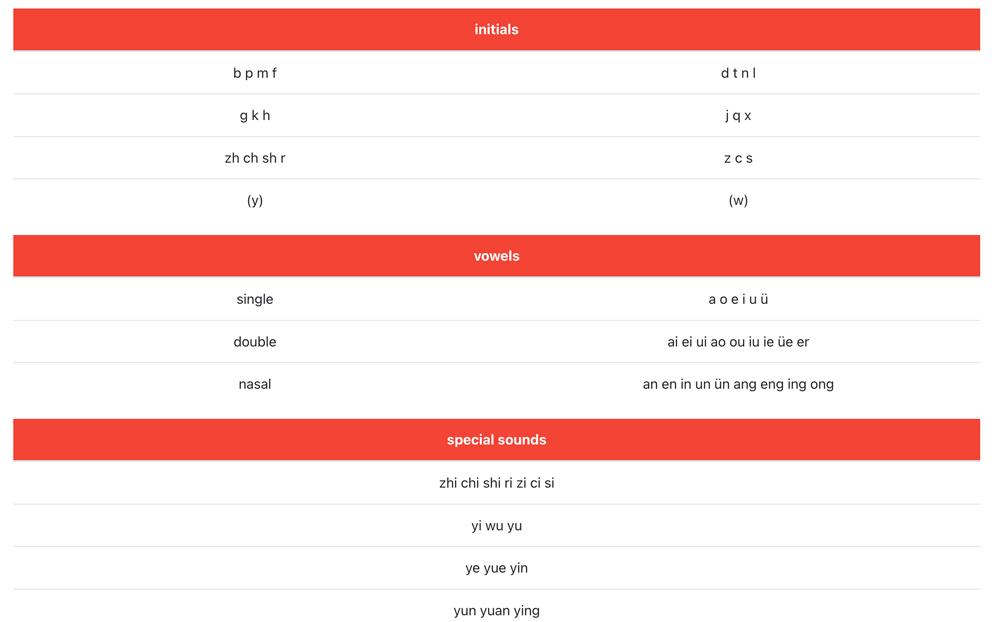Pinyin is the romanized form of the Chinese based on the pronunciation. It originates as a way of explaining Chinese to Western learners by spelling out the Chinese characters in the Latin alphabet. The Chinese government officially recognized it in the 1950. Later on, it was brought to elementary school in order to simplify the learning process and standardize pronunciation.
For representing the complex phonology of Standard Chinese, Pinyin uses all the letters of the basic Latin alphabet – except "v" –, it adds four digraphs: "sh”, “ch”, “zh” and “ng" plus the "u" with umlaut, that is, "ü". In addition, four different marks are used over the vowels "ō, ó, ǒ, ò". They indicate the four different tones in Chinese. The tones can also be indicated with numbers, "1, 2, 3, 4", although this is less common. The Pinyin system also dictates rules about the use of capital letters and the separation of words.
Each Chinese character usually represents one syllable. For example, "I am Spanish" is written with six characters, that is, with six syllables: "wǒ shì xī bān yá rén" or "wo3 shi4 xi1 ban1 ya2 ren2". It is also quite common to represent the Pinyin syllables of the same word together: "wǒ shì xībānyá rén".

The Mandarin syllable has two parts, an initial one (colored blue in the example) and a final one (marked in red). Green indicates the tone. As we will see in future lessons, Mandarin Chinese has four tones plus a neutral one, which is not transcribed.
The first chart below shows the initials, the second one shows what the vowels are like, and the third one shows the particular way of reading some final parts.



![What is 拼音 [pīnyīn]?](https://pre.khanjischool.com/uploads/images/3/e/l/zhk-img-pinyin_F1.jpg)